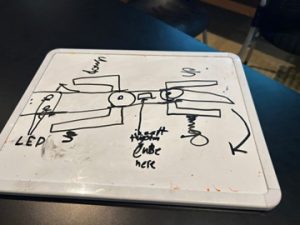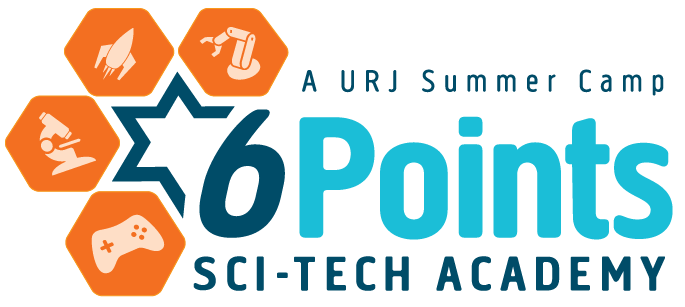When I stepped into Gil’s Robotics Workshop, I was surprised to find a group of seventh graders deep in conversation about animatronics at theme parks—a personal favorite topic of mine. Naturally, I pulled up a chair. But what really caught my attention was their project: building animatronic versions of Jewish mythological creatures.
I stayed. I watched. I helped.
Together, we explored these creatures’ stories and forms: a Golem mid-transformation, melting back into the earth; a Dybbuk whispering eerie sounds in the night; a Leviathan slithering through stormy waters. What I love most about teaching Jewish mythology is how excited students get to “own” the monsters of our tradition—to imagine, interpret, and reimagine what they look like. But this was the first time I watched campers literally bring them to life. Using motors, lights, gears, code, and a lot of savlanut (patience), they didn’t just learn from these stories—they animated them. In the process, they brought deep kavod (respect) to the original texts of our tradition and infused every creation with an incredible amount of sakranut (curiosity).
The result? What I believe may be the very first animatronic interpretations of Jewish mythical creatures—created right here at URJ 6 Points Sci-Tech Academy. Or, as we used to say in the early years of camp: “Only at Sci-Tech.” Where else would kids be using gears and motors to bring a Dybbuk to life?


Later that week, I visited Shela’s Digital Art Lab—and had déjà vu. Here, too, campers were creating digital depictions of Jewish mythological beings: a fierce Leviathan and Behemoth, the demon Lilith, another formidable Golem… and a happy snail.
Yes. A snail.
It turns out, a joke Shela made earlier in the week—sketching a silly snail meme—had taken on a life of its own. Inspired by the same energy that fuels both science and storytelling, the campers placed that snail into the sacred mythological canon alongside our monsters. Each digital creation in Shela’s class was thoughtful, skillful, and unique—and the snail, somehow, belonged. Again, this was an “only at Sci-Tech” moment.

So what do a snail, the Golem, and audio-animatronics have in common?
This summer, they each became unexpected symbols of sakranut (curiosity) and kesher (connection)—anchoring two corners of camp with imagination and joy during this final session.
